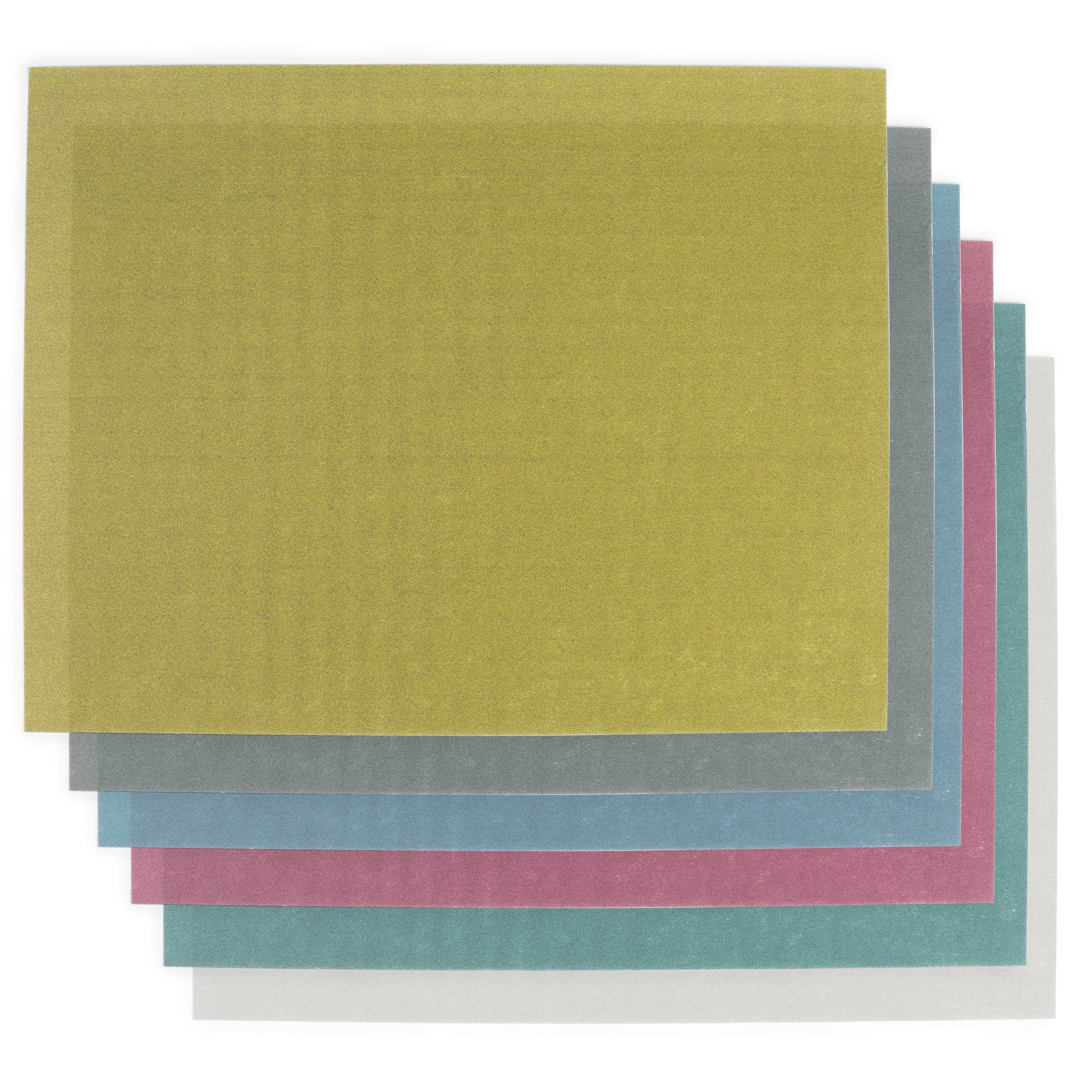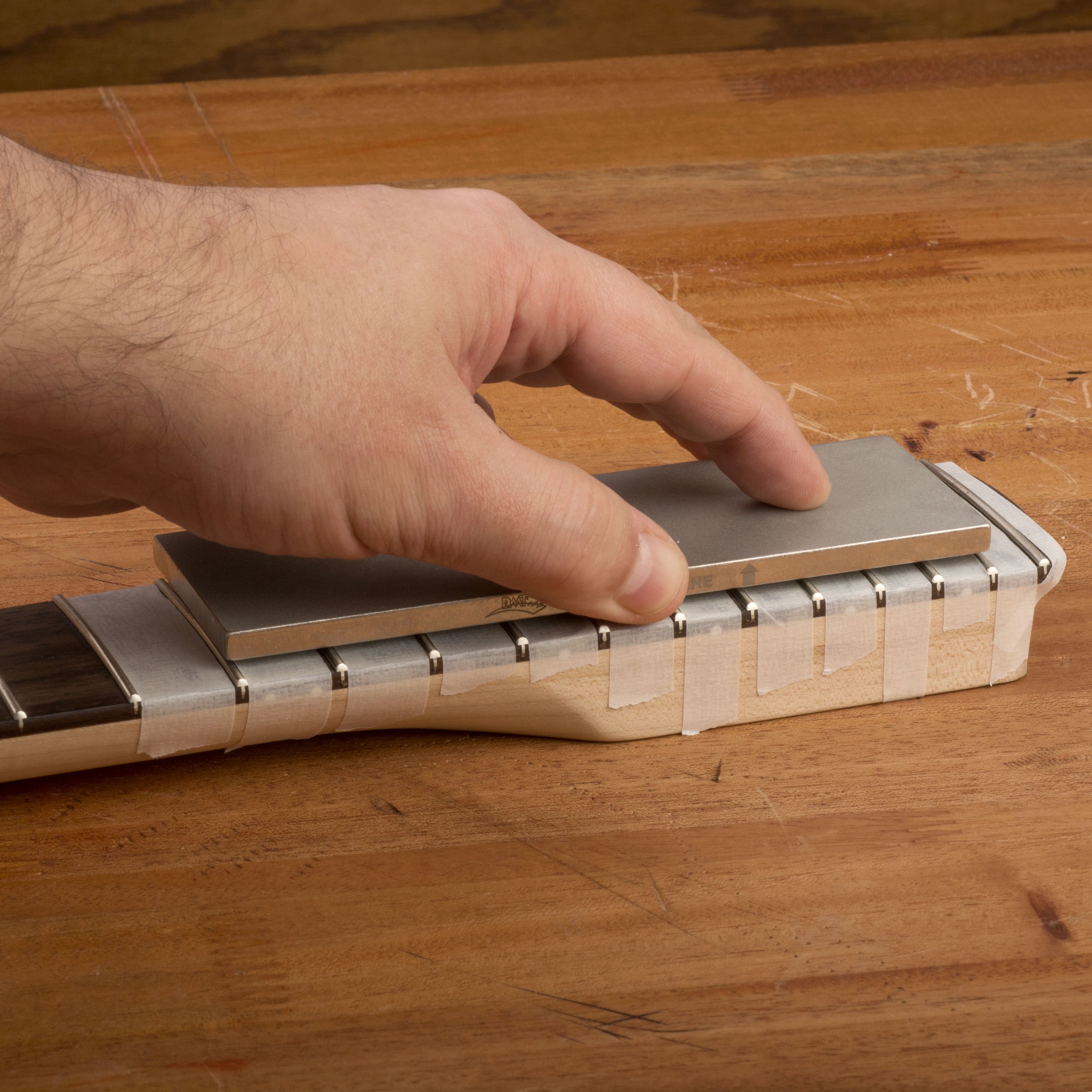When dry air makes fret ends stick out, here's the fix
This banjo’s problem is painful, but at least it’s not hard to fix. Returning home, he got a better instrument, and set this one aside. Recently Bob got the urge to pick the old banjo again. Years in a hot closet had dried it out, and the fret ends were sticking out 1/32" from the edges of the fretboard. Bob’s son in law, Mark Hyatt, stepped in to fix the problem. Mark directs marketing at StewMac, and wanted to try his hand at fretwork. I offered him the use of my shop for his first flight as a luthier. There’s no maker’s name on this nice old-timey banjo. I’d estimate that it’s from the early 1900s. The neck is maple, with no fretboard (the frets are set directly into the maple). The fret tops were a little bit worn, but miraculously buzz-free. It was just those nasty fret ends that needed work. Here's a good way to hold a neck while you work: fasten a mini cam clamp to the peghead, and hold the clamp in a nut/saddle vise. It’s a firm hold that allows free access to the whole neck. In this picture, Mark’s started filing those fret ends so they’re flush to the maple neck, using a 6" fret leveling file. That’s good insurance. It’d be easy to slip with the leveling file, and a single stroke would cut into the nut or nick the curve of the peghead. After filing the ends flush to the neck, they need smoothing. Here, Mark’s honing them with a coarse diamond leveling stone. This work goes quickly on most of the frets, leaving just one hard-to-reach area shown below. The fifth string tuner gets in the way of filing the first four frets on the bass side. Even with this short 3" leveler, there’s no room for a good filing stroke without banging into the tuner. The answer was to protect the fretboard edge with brown binding tape, leaving these fret ends exposed, then flush them to the board with a fret end dressing file. It takes firm pressure with the file, which is why we chose this heavy, tough tape. It offers better protection than masking tape. Regular masking tape is enough protection for the light filing needed to round and smooth all the fret ends. Here, the same dressing file used above knocks off any remaining sharp burrs and lightly rounds the fret ends. Shining the frets with 400-grit (green) polishing paper leaves them gleaming. A thin metal fingerboard guard protects the wood. Before stringing up, Mark leaves the neck clean and grease-free by wiping with a soft rag dampened with naphtha. (Nitrile gloves protect those pickin’ fingers.) The neck’s comfortable now that the fret ends are back where they belong. You could pick this for hours without needing a single band-aid! This banjo’s ready to go back to his dad-in-law, and Mark’s one happy first-time luthier!When dryness sets in, fret ends stick out

When Bob Parrott served as a Navy pilot in Vietnam, this banjo was there with him

Playing this neck was painful!

Handy Tip

A capo at the nut serves as a safety stop.
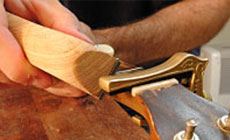

Problem.

Solution.
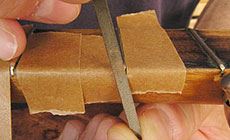
Dressing the fret ends.

Polishing is the final touch.
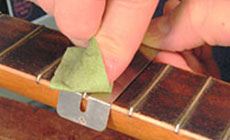
Clean up with naphtha.

Hey, it worked!

Trade Secrets archive:
